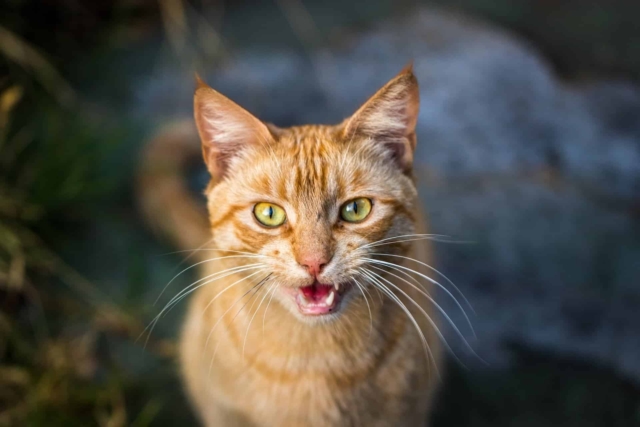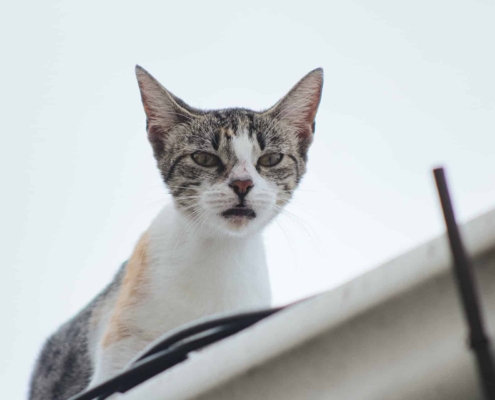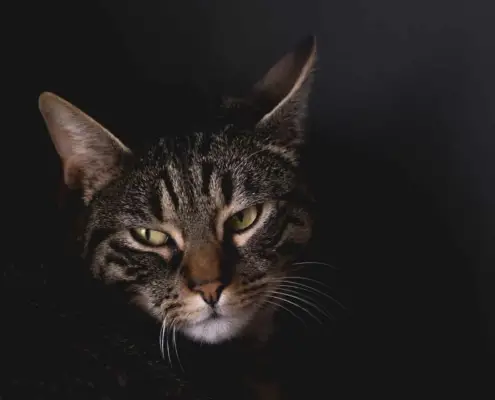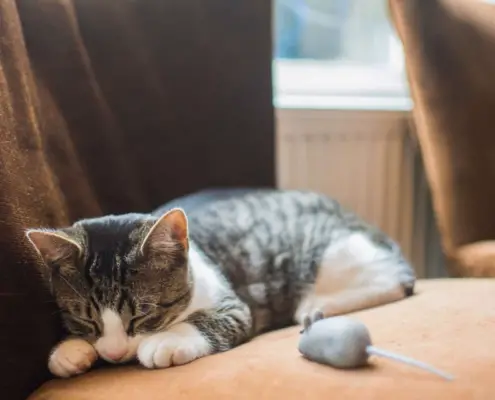
Cat yowling is a common behavior exhibited by our feline companions, but understanding why they engage in this vocalization can be perplexing for cat owners. Yowling is a distinct and often loud sound that cats make, resembling a combination of a howl and a meow. It can vary in intensity, duration, and frequency, leaving many owners puzzled as to the underlying cause. In order to address this behavior effectively, it is crucial to delve into the science behind cat yowling.
To comprehend cat yowling, it is important to recognize that cats are highly communicative animals. They use vocalizations, body language, and other behaviors to express their needs, emotions, and desires. Yowling is one such vocalization that serves various purposes. It can be a form of communication, a means of attracting attention, or an expression of frustration or discomfort. By understanding the context in which yowling occurs, cat owners can gain insight into their feline’s needs and respond appropriately.
Common reasons why cats yowl
There are several common reasons why cats yowl, and it is crucial to identify the underlying cause in order to address the behavior effectively. One prevalent reason for cat yowling is mating behavior. Unneutered male cats may yowl to attract female cats during the breeding season. Female cats in heat may also engage in yowling to signal their availability to potential mates. Spaying and neutering cats can significantly reduce or eliminate this behavior.
Another common cause of cat yowling is attention-seeking. Cats are intelligent animals and have learned that yowling can be an effective way to gain their owner’s attention. Whether it’s for food, play, or simply companionship, cats may resort to yowling to communicate their desires. Consistent routines, positive reinforcement for desired behaviors, and engaging in interactive play sessions can help redirect attention-seeking behavior and minimize yowling.
Medical causes of cat yowling
In some cases, cat yowling may be a symptom of an underlying medical condition. Cats may yowl if they are in pain or discomfort. Conditions such as urinary tract infections, arthritis, dental issues, or gastrointestinal problems can manifest as yowling behavior. If a cat’s yowling is accompanied by other signs of illness, such as changes in appetite, litter box habits, or overall behavior, it is crucial to consult a veterinarian for a thorough examination and appropriate treatment.
Additionally, cognitive decline and senility can contribute to yowling behavior in older cats. As cats age, they may experience cognitive changes similar to Alzheimer’s disease in humans. This can lead to confusion, disorientation, and increased vocalization, including yowling. Providing environmental enrichment, such as puzzle toys and interactive play, can help stimulate the aging cat’s mind and alleviate some of the yowling behavior.
Stress and environmental factors contributing to cat yowling
Stress and environmental factors can play a significant role in triggering cat yowling behavior. Cats are highly sensitive to changes in their environment and may vocalize their distress through yowling. Moving to a new home, introducing a new pet or family member, or rearranging furniture can disrupt a cat’s sense of security and trigger yowling. Additionally, boredom and lack of mental stimulation can lead to increased vocalization, including yowling.
To address stress-related yowling, it is important to create a calming environment for your cat. Provide hiding spots, vertical spaces, and scratching posts to help your cat feel safe and secure. Establish consistent routines for feeding, play, and sleep to reduce the uncertainty that can contribute to stress. Using pheromone diffusers or sprays can also help create a sense of calmness within the environment. If stress factors persist, consulting with a veterinarian or a professional animal behaviorist can provide further guidance and support.
How to address cat yowling behavior
Addressing cat yowling behavior requires a multi-faceted approach that encompasses training, behavior modification techniques, and environmental adjustments. Positive reinforcement training can be used to teach cats alternative behaviors to yowling, such as using a scratching post or coming to their owner for attention. Rewarding desired behaviors and ignoring or redirecting unwanted vocalizations can help modify the cat’s behavior over time.
Creating a calming environment for your cat is also essential in addressing yowling behavior. Ensure that your cat has access to a comfortable and safe space where they can retreat and relax. Provide environmental enrichment, such as interactive toys, puzzle feeders, and vertical spaces, to keep your cat mentally stimulated and engaged. Regular play sessions and interactive bonding time with your cat can also help alleviate stress and reduce yowling.
When to seek professional help for cat yowling
While many cases of cat yowling can be addressed through environmental adjustments and behavior modification techniques, there are instances where professional help may be necessary. If your cat’s yowling behavior persists despite your efforts, or if it is accompanied by other concerning symptoms, such as aggression or self-injury, it is crucial to consult with a veterinarian or a professional animal behaviorist. They can conduct a thorough assessment, rule out any underlying medical conditions, and provide tailored guidance and support to address the yowling behavior effectively.
Preventing cat yowling in the future
Preventing cat yowling in the future involves proactive measures to address the underlying causes and create a harmonious environment for your feline companion. Spaying or neutering your cat can eliminate mating-related yowling behavior. Establishing consistent routines, providing mental and physical stimulation, and creating a stress-free environment can help prevent attention-seeking yowling. Regular veterinary check-ups can also help identify and address any potential medical issues before they escalate into yowling behavior.
By understanding the science behind cat yowling and addressing the behavior with compassion, patience, and appropriate interventions, cat owners can create a peaceful and harmonious relationship with their feline companions.
Conclusion
Cat yowling is a common behavior that can be attributed to various reasons, including mating behavior, attention-seeking, medical conditions, stress, and environmental factors. Understanding the underlying causes of yowling is crucial in addressing the behavior effectively. By implementing training techniques, creating a calming environment, and seeking professional help when necessary, cat owners can help alleviate yowling behavior and foster a harmonious relationship with their feline companions. Remember, patience, compassion, and a deep understanding of your cat’s needs are key in addressing cat yowling.
If you enjoyed my article, I would appreciate you sharing it with your network.

Sima Ndlebe
Sima writes for CatBuzz. He is interested in Cats, Health and Fitness, and Entrepreneurship.
Published: 1 November 2023



